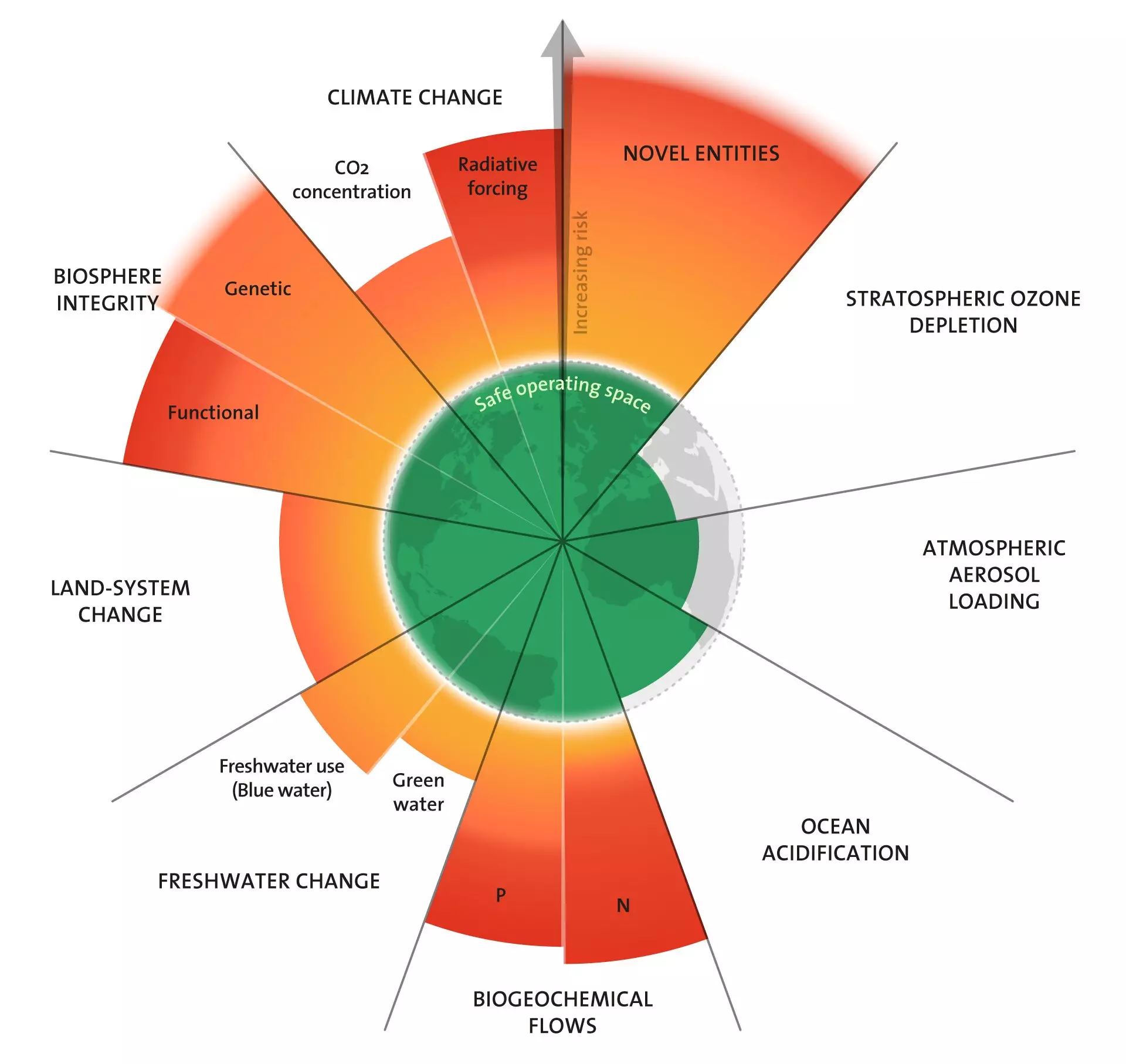A recently published study has revealed that human activities are increasingly affecting the stability of the planet and raising the risk of triggering drastic changes in Earth’s overall conditions. The interaction between life (represented by the planetary boundary, Biosphere Integrity) and climate has controlled the environmental conditions on Earth for over 3 billion years. However, various human-driven activities such as land use changes, alteration of water levels, introduction of synthetic chemicals, and greenhouse gas emissions have disrupted these interactions.
The study highlights the significance of maintaining and respecting the interactions in the Earth system to ensure that they are similar to those that have shaped Earth’s conditions for the past approximately 12,000 years. Failure to do so could lead to dramatic changes that would impede the Earth’s ability to support modern civilizations.
The planetary boundaries framework identifies nine components of the global environment that regulate the stability and livability of the planet for human populations. These boundaries are breached to varying degrees due to human activities impacting these components. Utilizing the latest scientific understanding of the Earth system’s functioning, this framework establishes a “safe operating space” for humanity by setting limits on the extent to which human activities can impact critical processes without the risk of triggering irreversible changes.
For the first time, the study presents metrics for all nine boundaries. It reveals that six of these boundaries have already been transgressed, and the transgression is increasing for all except the degradation of the Earth’s ozone layer. This indicates that a global focus solely on climate is insufficient. Urgently developing Earth system models that accurately replicate the interactions between these boundaries, particularly Climate and Biosphere Integrity, is crucial.
Worrying Trends: Increasing Transgression of Planetary Boundaries
The trend of escalating transgression of these boundaries raises concerns among experts. Professor Katherine Richardson, leader of the study and leader of the Sustainability Science Center at the University of Copenhagen, emphasizes that crossing six boundaries does not automatically guarantee a disaster. Nevertheless, it serves as a clear warning signal akin to high blood pressure. With an elevated blood pressure, the risk of a heart attack increases. Similarly, reducing the pressure on the six planetary boundaries becomes imperative to safeguard our future and that of our children.
One critical finding of the study is the need for increased focus on the interactions between these boundaries. Johan Rockström, Director of the Potsdam Institute for Climate Impact Research (PIK) and the original proponent of the framework in 2009, stresses that a focus solely on human-caused climate change is inadequate. The integrity of the biosphere, alongside climate change, constitutes the pillars of our planet’s stability. Mitigating global warming while preserving a functional biosphere are two interdependent objectives that require simultaneous attention.
The Importance of Land Use Change and Biomass Use
The study underlines the significance of respecting the Land Use Change boundary, particularly in light of the increasing global use of biomass as an alternative to coal, oil, and gas. Biomass, derived from photosynthesis, provides the energy that supports biodiversity by converting the sun’s energy into a usable form. The study reveals that humans now appropriate approximately 30% of the energy that was once available to support biodiversity before the Industrial Revolution. This substantial energy removal significantly contributes to biodiversity loss.
To assess human impacts on biodiversity, the study proposes adopting Human Appropriation of Net Primary Production (HANPP) as one of the metrics. It recognizes that the depletion of energy that would have otherwise been accessible to nature directly drives biodiversity loss. Therefore, incorporating biomass use into biodiversity assessments can enhance our understanding and guide efforts to mitigate human impacts.
Johan Rockström emphasizes that relying solely on climate change agreements, such as the Paris Agreement, falls short of what is necessary to secure prosperity and equity for all on Earth. While recognizing the steps taken in the Paris Agreement and the commitment to halt biodiversity loss at the 2022 Montreal-Kunming COP15, the study suggests that much more needs to be done. The Planetary Boundaries science offers a “guide for action” to protect the Earth’s resilience and secure a sustainable future, extending beyond climate change to comprehensive Earth system modeling and analysis, and systematic efforts to protect, recover, and rebuild planetary resilience.
This study’s key findings provide a wake-up call for humanity, urging the international community to limit our impact on the planet. Preserving the Earth’s conditions that support advanced human societies is essential for achieving long-term sustainability and protecting biodiversity. By acknowledging the boundaries and taking decisive action, we can navigate our current situation with rising planetary risks and secure a prosperous future for all.


Leave a Reply